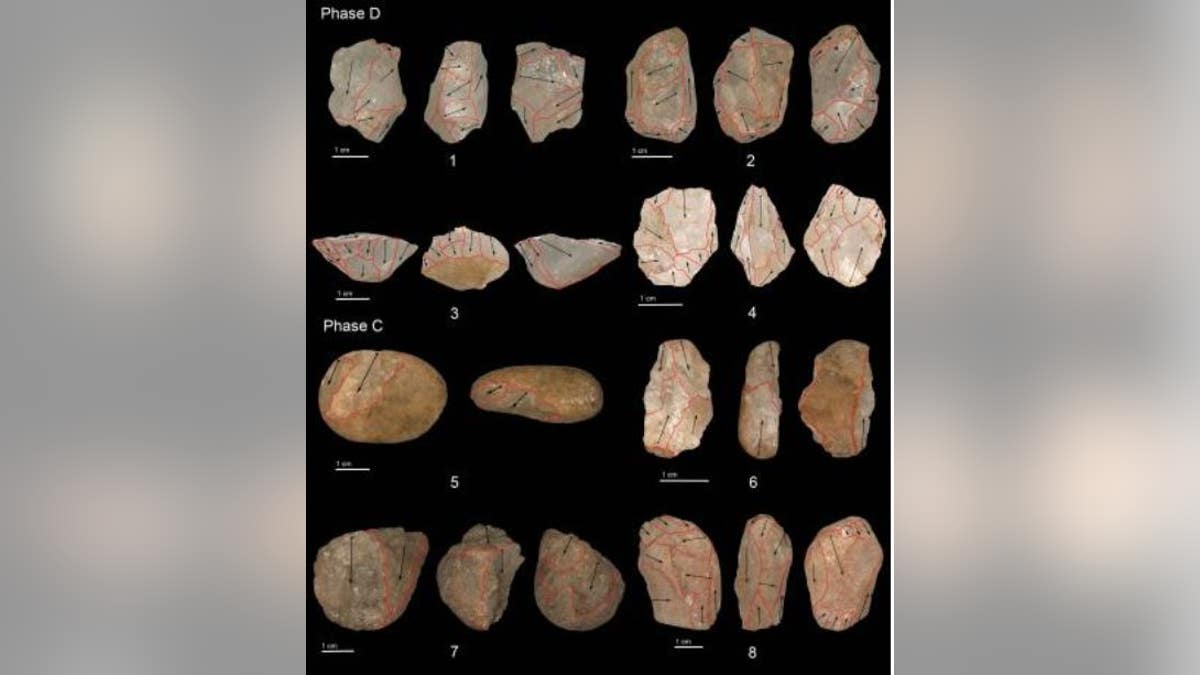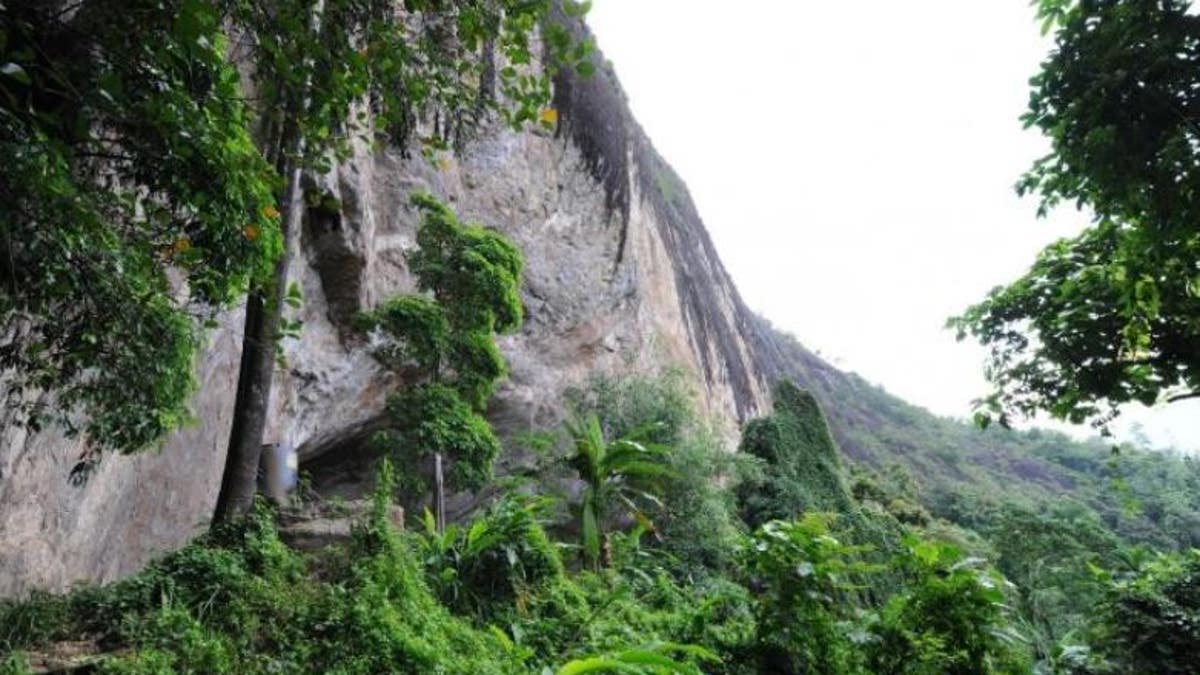Fox News Flash top headlines for Oct. 3
Fox News Flash top headlines for Oct. 3 are here. Check out what's clicking on Foxnews.com
Tiny stone tools -- known as microliths -- were essential to the growth of our species thousands of years ago.
According to a new paper published in PLUS One, microliths seen in the Fa Hien cave in the tropical rainforests of Sri Lanka date to 45,000 years ago. Their existence at this location suggests a range of "more diverse ecological contexts" for their use by Homo sapiens, researchers believe.
The island of Sri Lanka has been seen as a vital area for examining how hunter-gatherers adapted in prehistoric times.
ANCIENT DNA PUTS BLACK DEATH'S ORIGIN IN RUSSIAN REGION

The oldest microlith artifacts from Fa Hein cave in Sri Lanka. (Max Planck Institute)
Discovering these types of artifacts in this setting is significant, according to scientists, because the tools have been most typically linked to hunting medium to large animals in grassland areas.
"Interestingly, our evidence also shows that stone tool technology changed little over the long span of human occupation, from 48,000 to 4,000 years ago," said Andrea Picin, of the Max Planck Institute for the Science of Human History and co-author of the study, in a statement.
Researchers believe this is evidence that the technological adaptation practiced by these early rainforest inhabitants was very successful over the course of thousands of years.
IN GLOBAL PANDEMIC, WHICH COUNTRIES ARE SAFEST HAVEN?

The Fa Hien Cave overlooking the rainforest in Sri Lanka. (Max Planck Institute)
"While we suspect that these small stone tools were used as part of projectile technologies, as we have also found for bone tools at the same site, residue analysis and impact fracture analysis is ongoing," explained Michael Petraglia, co-corresponding author of the paper.
"Whatever the results, these miniaturized stone tools place Sri Lanka in a central position in terms of discussing technological sophistication among our species. We have essentially uncovered the 'Upper Palaeolithic' of the rainforest," Petraglia added.

